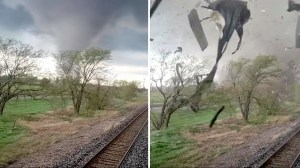A fascinatingly informative satellite simulation of the intense 2017 Atlantic hurricane season shows how meteorologists at the NASA Goddard Space Center employ the use of tiny aerosols such as evaporated sea salt, Saharan Desert dust and fire smoke to visualize how a storm is moving over the ocean and track where it will probably make landfall.
How can you see the atmosphere? By tracking what is carried on the wind. Tiny aerosol particles such as smoke, dust, and sea salt are transported across the globe, making visible weather patterns and other normally invisible physical processes. This visualization uses data from NASA satellites, combined with mathematical models in a computer simulation allow scientists to study the physical processes in our atmosphere. By following the sea salt that is evaporated from the ocean, you can see the storms of the 2017 hurricane season.






